You may know that beans, peas, and other legumes can fix nitrogen in the soil. But did you know they can’t do this on their own?
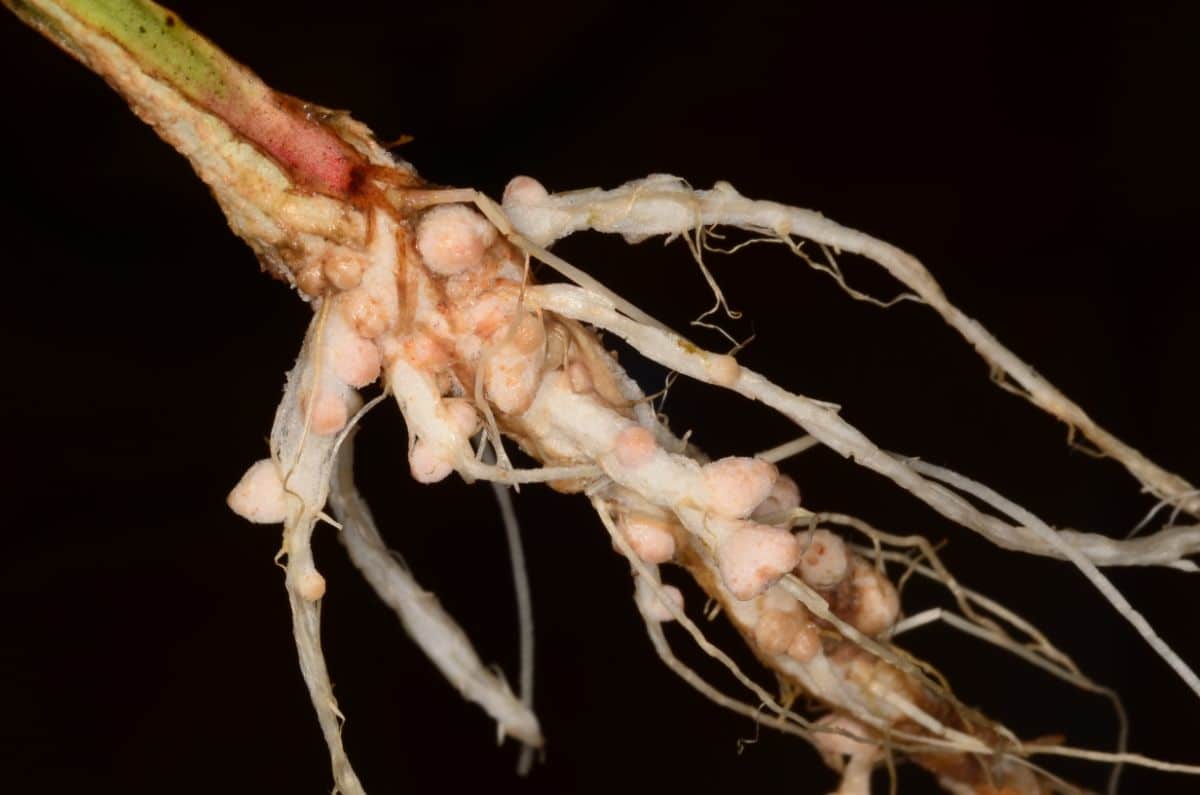
Legume plants can only fix nitrogen in the presence of a soil-dwelling bacteria known as Rhizobium. While Rhizobium naturally occurs in the soil, it’s usually only found in small concentrations. “Inoculating” your plants with a soil inoculant containing Rhizobium bacteria will improve the growth of your legumes and benefit your garden in other ways too!
If you’d like to learn all about legume soil inoculants and how to use them, you’ve come to the right spot. We’ll cover everything you need to know to grow a larger harvest of beans and peas and develop healthier soil right here!
Jump to:
Why inoculate legume seeds?
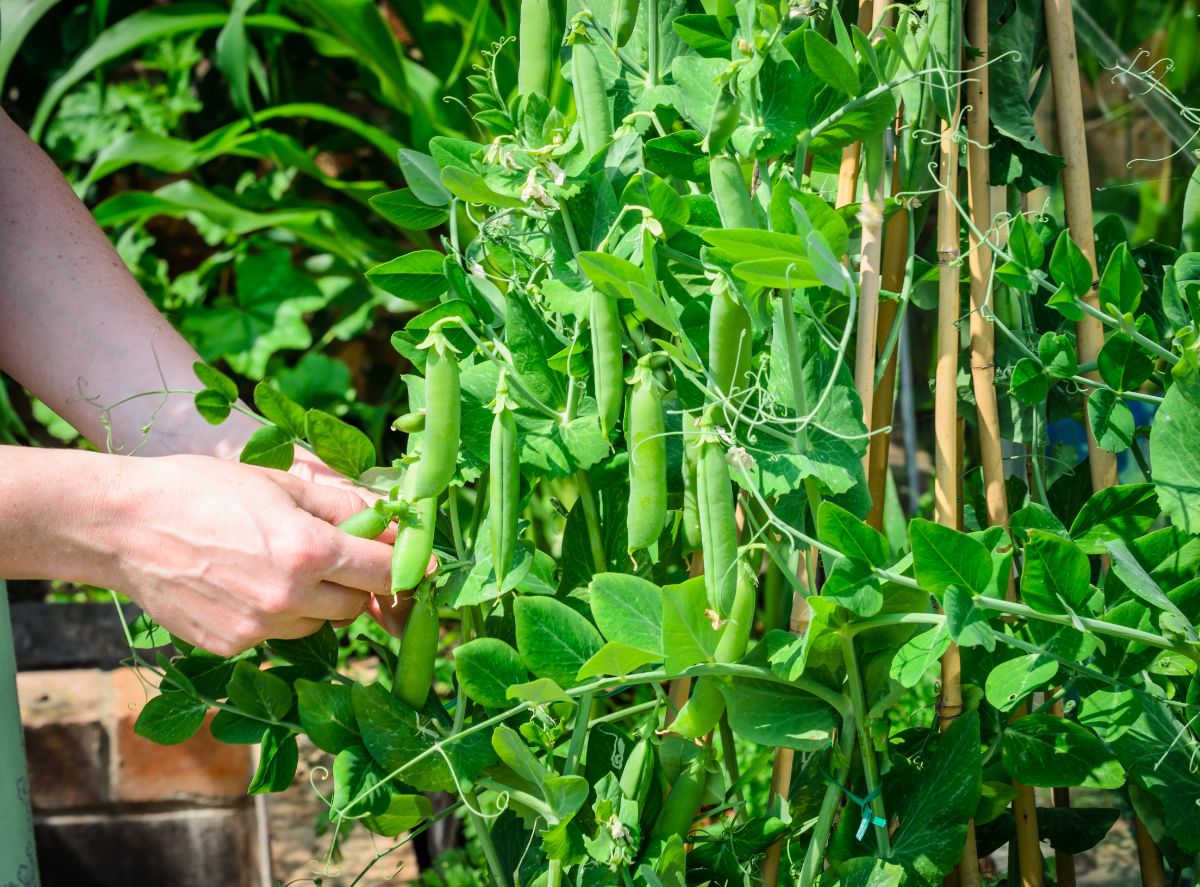
Rhizobium bacteria naturally occurs in organic soil, especially in areas where legume plants have grown previously. However, adding soil inoculants to your plants will increase the amount of beneficial bacteria in your garden and result in healthier plants and a larger harvest.
When legume seeds are inoculated, the bacteria forms a symbiotic relationship with the roots of legume plants. The bacteria spreads throughout the root system of legumes and forms nodules that convert atmospheric nitrogen into nitrogen in the soil, that is more easily absorbed by plants. Legumes dosed with soil inoculant can form their own nitrogen, so they don’t need any extra nitrogen fertilizer throughout the growing season.
In a way, soil inoculant works like the probiotics in yogurt in that it increases the amount of nutrients that plants can absorb. This translates into larger bean and pea plants, lusher growth, and a more impressive harvest. But that’s not all.
If you’re growing legumes to improve your garden soil, soil inoculant can help with that too. By making it easier for legume roots to fix nitrogen into the soil, soil inoculant will encourage higher nitrogen concentrations in your garden beds, which will improve the health of your garden. This will also benefit any plants sown near your legumes or plants you grow in that area after you pull out your legume plants.
Best of all, soil inoculant is all-natural, and it’s approved for organic gardens, so no matter your gardening style, you can always use this product!
When to inoculate seeds?
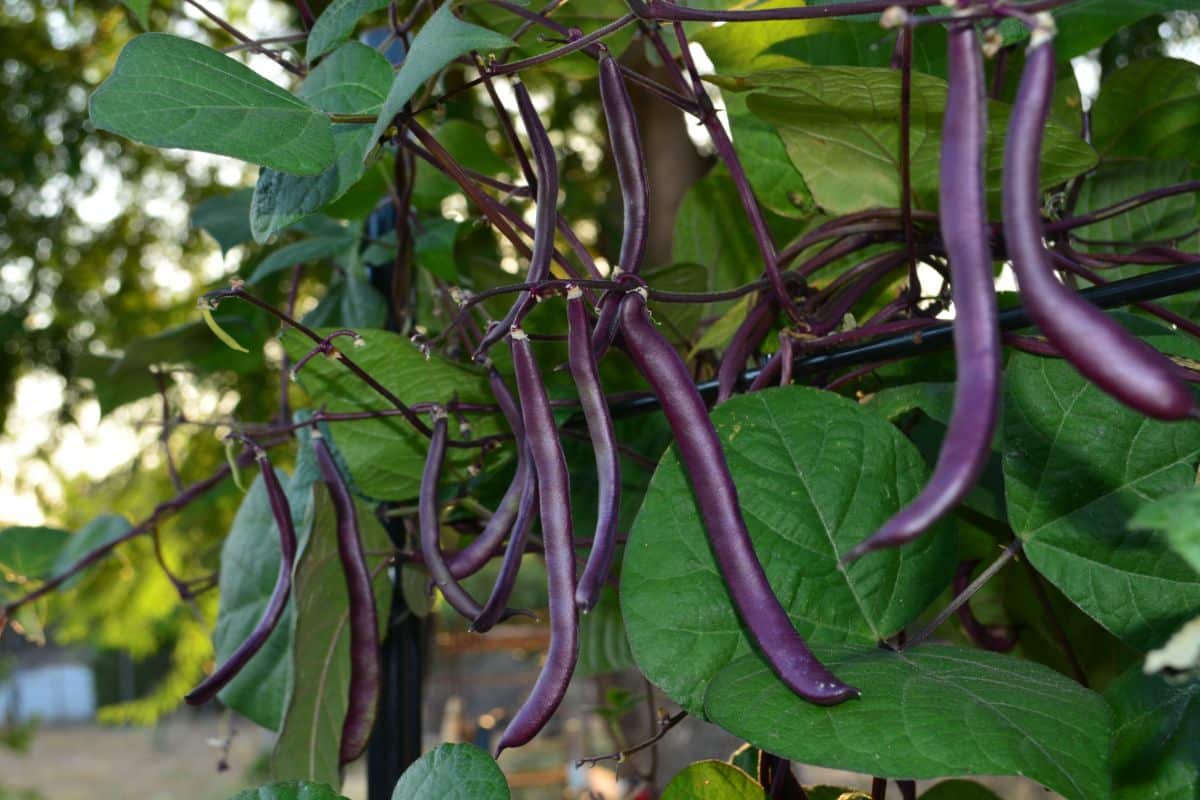
If you’ve grown inoculated legumes in a section of your garden before, you may not need to inoculate seeds again, as Rhizobium bacteria can live in the soil for several years. However, if you haven’t grown peas or beans in your garden before, it’s a good idea to inoculate your seeds before planting. You may also want to inoculate seeds every year, just in case, since you can’t have too much inoculant.
The best time to inoculant your seeds is when you’re planting them – either in spring or autumn. Just keep in mind that soil inoculant works best in warmer temperatures, ideally above 60°F. Cold temperatures can reduce the inoculant’s effectiveness, but this is more likely to be an issue in very late fall plantings of cover crops, not spring gardens.
Depending on how you like to work, you can either inoculate your seeds prior to sowing them, or you can inoculate them right in your garden after planting. Both options are super simple and effective ways to boost the yields of your bean and pea plants.
How to inoculate seeds?
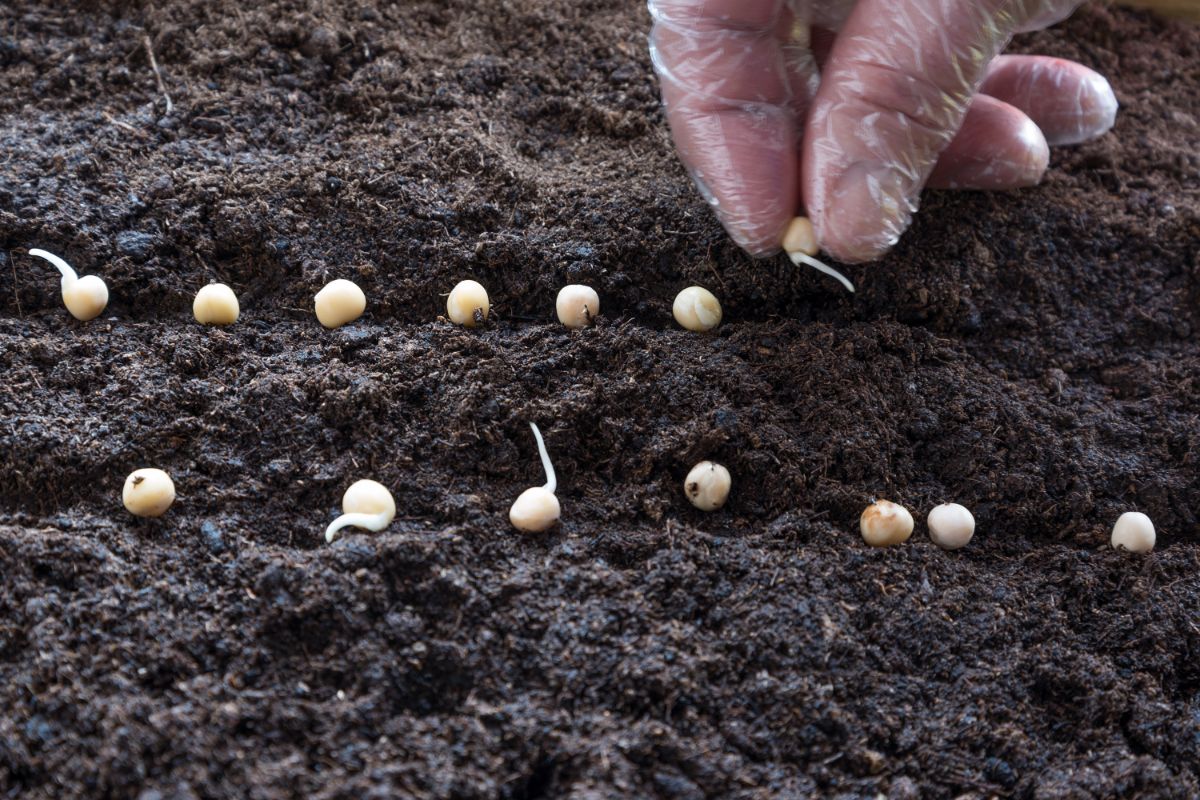
There’s no right or wrong way to inoculate seeds, and you can’t over-inoculate plants, so you don’t need to worry about careful measuring. In fact, the more beneficial bacteria you introduce into your soil, the better your plants will be at fixing nitrogen! Even better, soil inoculant comes in a granular form, which makes for an even easier application process.
While there are different ways to inoculate bean and pea seeds, here are 2 of our favorite methods:
Method 1: Direct Application
This method works well if you presoak your bean and pea seeds prior to planting!
Step 1: Presoak your seeds
Many gardeners soak bean and pea seeds before planting them in order to boost germination rates. To do this, add your seeds to a small container and cover them with an inch or 2 of room-temperature water. Allow the seeds to soak overnight or up to 24 hours, and then drain off the extra water.
Alternatively, if you don’t want to presoak seeds, you can simply dampen the seeds slightly with tap water before moving on to the next step.
Step 2: Add your inoculant
Spread your legume inoculant on a shallow work surface, like an old baking tin. Then, simply roll your bean and pea seeds around in the inoculant until they are thoroughly coated.
Step 3: Plant your seeds
Finally, plant your seeds as you normally would. Depending on what you’re growing and your location, you can directly sow seeds outdoors or plant them in pots inside. After sowing, water your seeds in well, and then just wait for your plants to sprout!
Method 2: Garden Application
This method is ideal if you have lots of seeds to plant or if you don’t want to fuss with the inoculant much.
Step 1: Sow your seeds
Following the instructions on your seed packet, plant your bean and peas seeds at the correct depth. This can be done outdoors in your garden or indoors in pots. After sowing your seeds, don’t cover them up with soil just yet!
Step 2: Add your inoculant
Next, sprinkle soil inoculant over your seeds and straight into the planting hole. You can be generous with this, but don’t bury your seeds too deep that they can’t sprout!
Step 3: Cover up your seeds
After sprinkling on your inoculant, cover up the seeds with soil and then water them well. That’s all there is to it!
Finding the right inoculant
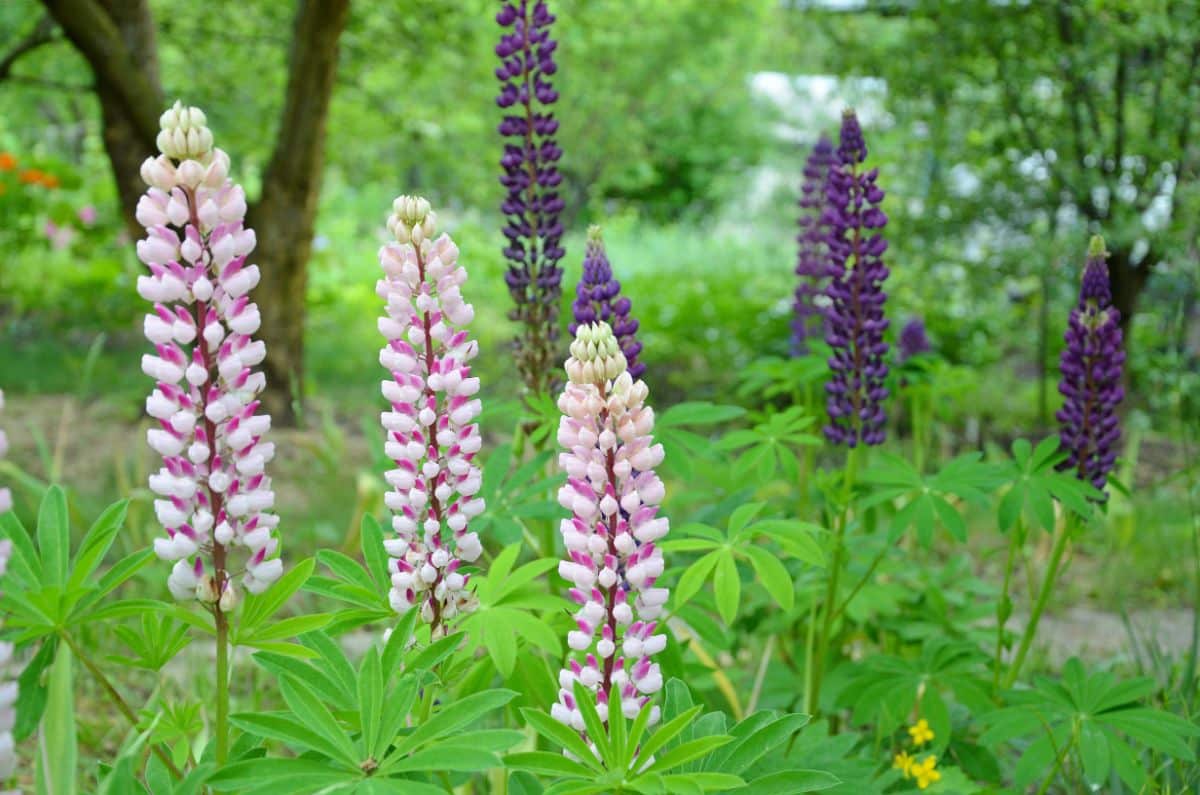
There are different strains of Rhizobium bacteria, and some strains are very plant-specific and only work on a particular type of legume. For this reason, it’s important to do your research so that you know the right type of inoculant to use for the particular type of legume plants you’re growing.
Most often, gardeners want to grow beans and peas, which should be inoculated with Rhizobium leguminosarum. Other inoculant varieties can be especially well-suited to different types of legume plants, such as alfalfa, white clover, lupines, and certain cover crops.
Soil inoculants can be purchased online or at many local garden centers. Amazon has several types of soil inoculant, as do companies like Fedco that sell bags of both Exceed and Guard-N soil inoculant that work well for green beans, peas, soybeans, lentils, vetch, and more.
How to know if legumes are inoculated?
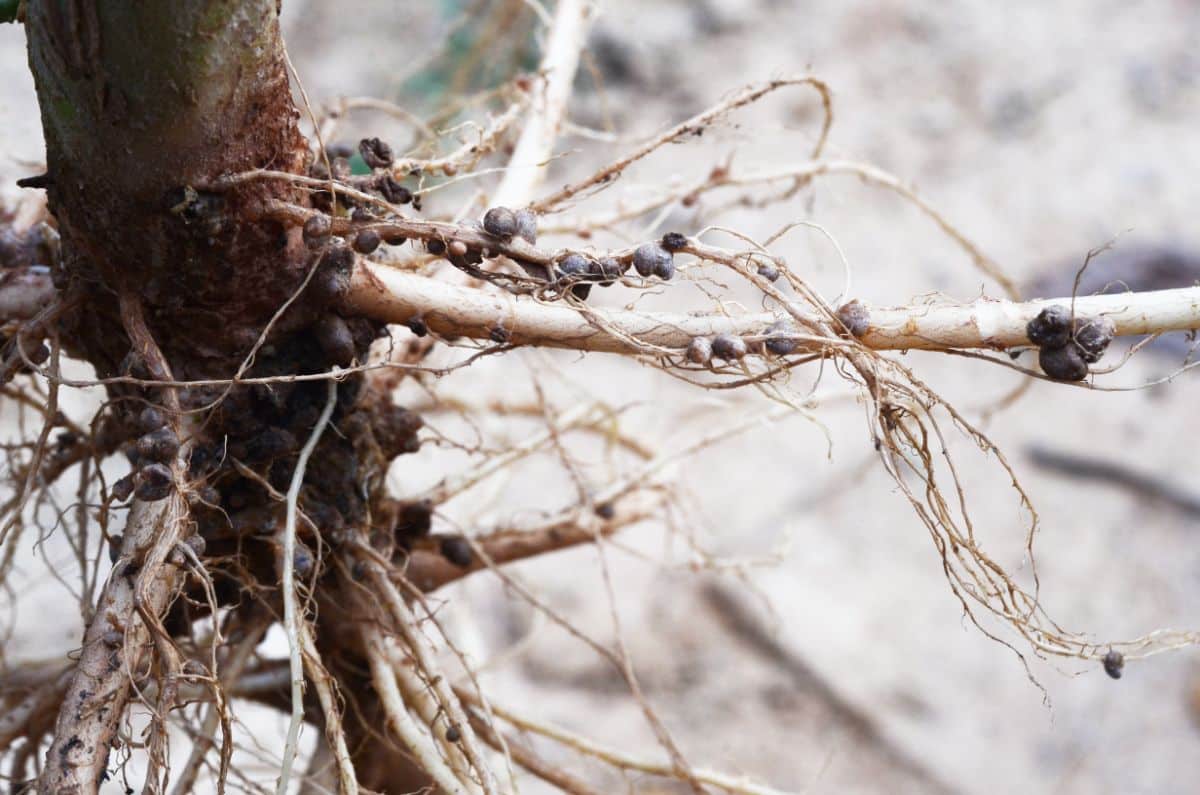
If your bean and pea plants are growing happily and producing lots of leaves, vines, and pods, there’s a good chance that your plants have been effectively inoculated. However, if you’d like to investigate further, you can dig up a single plant and inspect its root system.
The presence of small nodules on the plant’s roots shows that the plant has been properly inoculated. If those nodules are slightly pink in color, the beneficial bacteria are actively at work fixing nitrogen. White nodules, on the other hand, signify that the bacteria isn’t fixing nitrogen properly, which may occur if you used too little inoculant or if certain other factors are at play.
Other tips for using soil inoculant
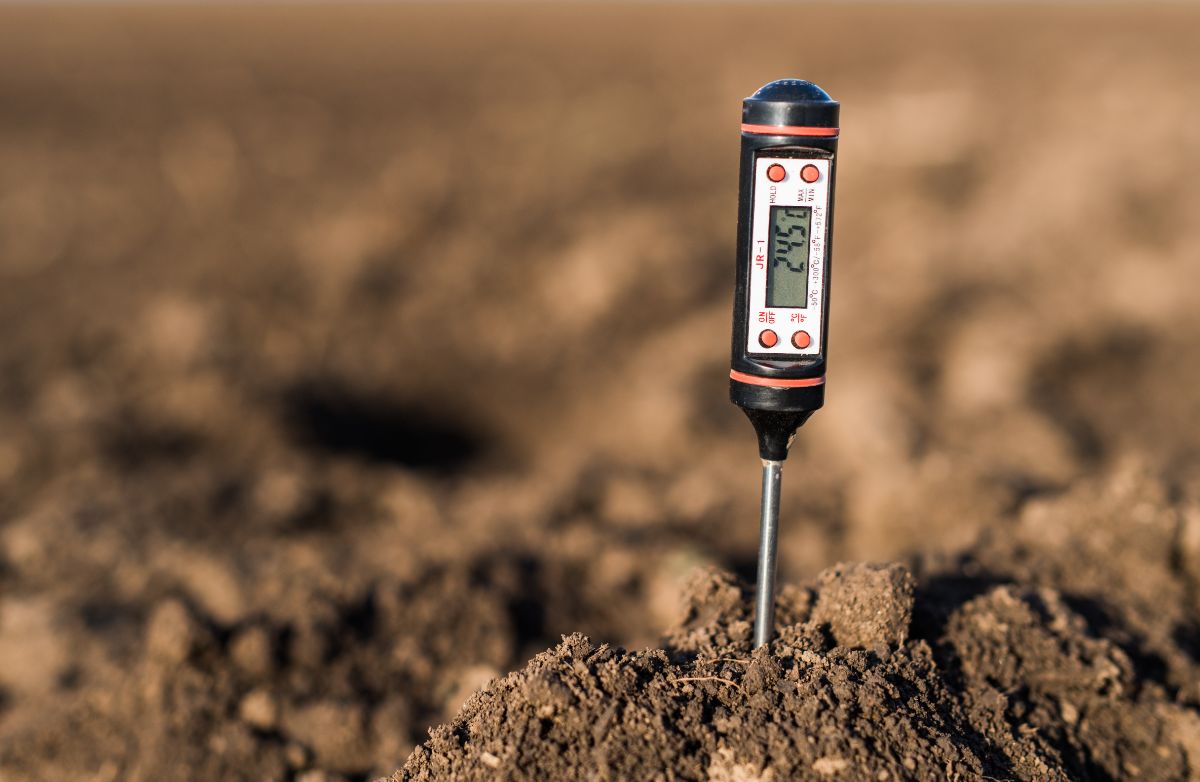
Using legume soil inoculant is a relatively straightforward process and is an easy way to boost your garden’s yields and grow lusher plants too. If you want to get more out of your soil inoculant, be sure to follow the tips below.
- Test your soil and amend it if needed.
Legume inoculant doesn’t work as well in highly acidic soils, so you may want to amend your soil if your garden is very acidic. Ideally, aim for a pH that is around 6.5, which is slightly acidic. Peas grow best in slightly acidic gardens, but this pH is still high enough that soil inoculant will work.
- Add compost.
Compost has so many benefits for the organic garden. It improves plant health, enhances soil structure, boosts soil’s drainage abilities, and it can even be used to suppress weeds. When combined with soil inoculant, compost offers other benefits too.
Using compost in conjunction with soil inoculant can make it even easier for plants to absorb water and nutrients. Compost also adds other beneficial microorganisms to your garden that can work with soil inoculants to promote plant and soil health.
- Compost legume plants.
Although soil inoculants help legume plants fix nitrogen in the soil, legumes also have a lot of nitrogen in their stems and leaves. That means that, once your plants die back in fall, you can get more benefits from them by tilling old debris from bean and pea plants back into your garden soil. Alternatively, you can add this material to your compost pile for a quick boost of nitrogen.
While this process will work most of the time, you don’t want to keep any diseased plant matter around or add it to your compost pile. So if your bean plants suffered from a bout of powdery mildew or other diseases during the growing season, it’s probably a good idea not to reuse any infected plants.
- Don’t forget to inoculate cover crops.
While many gardeners use soil inoculant on their beans and peas, this product can be very effective with certain cover crops too. Cover crops in the legume family, such as vetch and field peas, are used to add nitrogen to garden beds, and you can encourage plants to fix even more nitrogen into your soil by adding in a soil inoculant. Just remember to select the right inoculant variety for the type of legume you’re growing.
Frequently asked questions
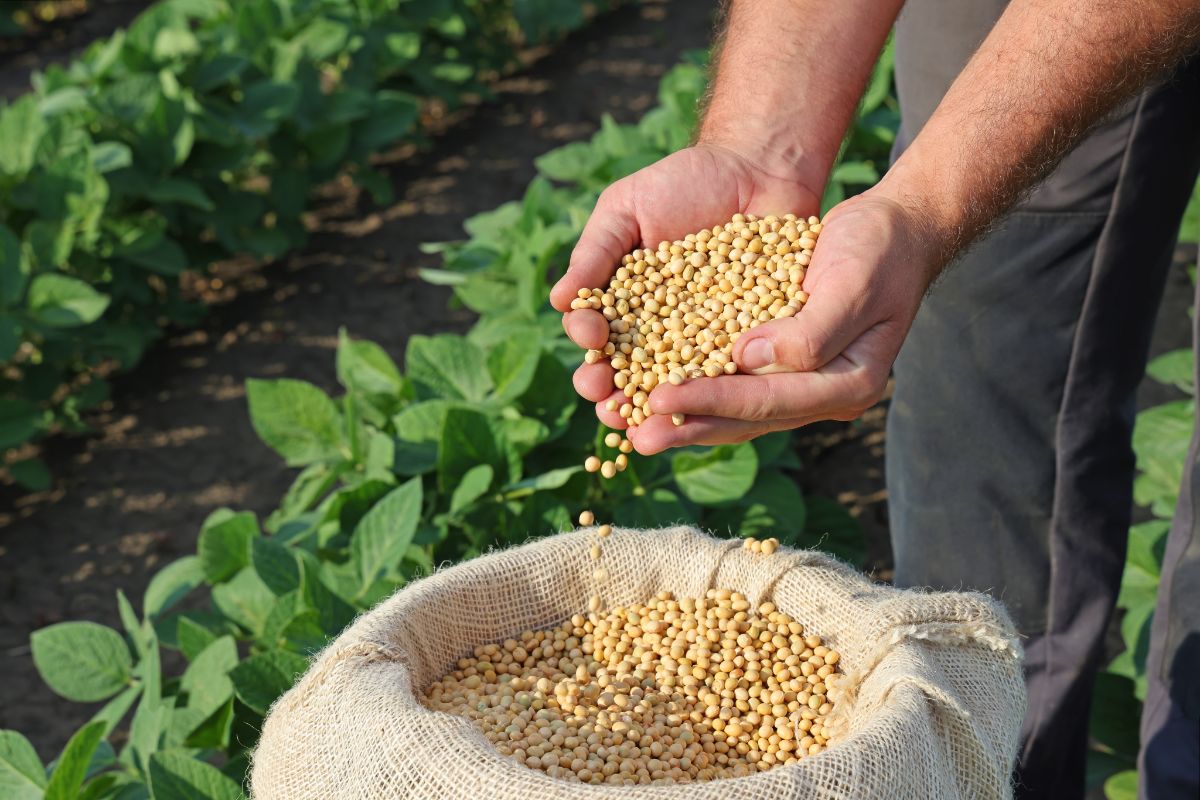
Legume plants don’t strictly need soil inoculant, but using this product will help your plants grow larger and produce a bigger harvest.
No. The more soil inoculant you use, the more nitrogen your plants will be able to fix. Just avoid covering your seeds with so much inoculant that they can’t sprout!
Like other legumes, green beans fix nitrogen into the soil, and they will benefit from the use of soil inoculant. Inoculated green bean plants will have access to more nitrogen, which will translate into bigger plants and more green beans!
In general, legume inoculant stays fresh for about 1 year, but some freeze-dried inoculants can last up to 3 years when properly stored. Some bean and pea seeds can also be purchased pre-inoculated; however, the inoculant on these seeds usually only stays fresh for about 3 months.
After planting, it takes a while for new seeds to sprout and develop an extensive root system. As a result, it can take about 6 weeks after planting for legumes to begin fixing nitrogen.
As with other legumes, soybeans will benefit from a soil inoculant, which increases harvest yields and boosts plant health. Soybeans that aren’t inoculated will be less vigorous and have lower yields.
Summary
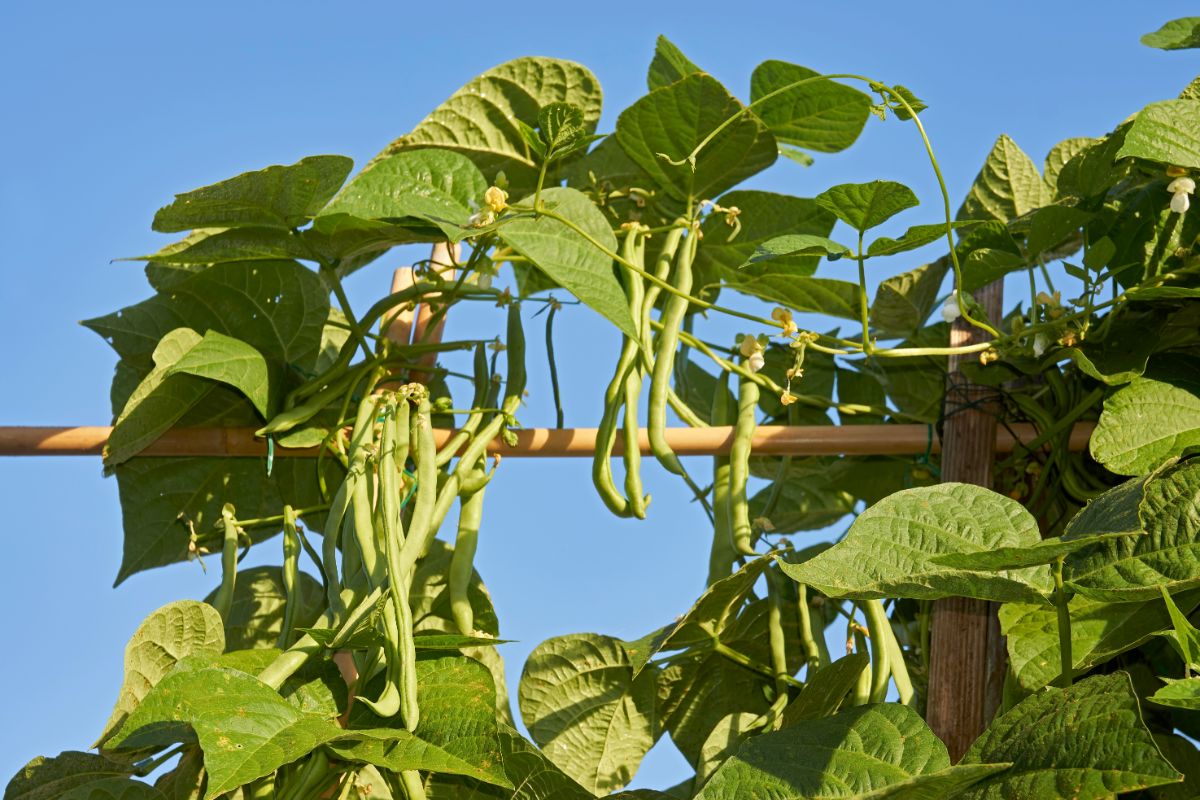
Beans and peas are some of the easiest vegetable plants to grow, and their cold hardiness makes them perfect for spring and fall gardens. But if you want to grow even more beans and peas this year, one of the best ways to get a bigger harvest is to use soil inoculant. Soil inoculants can also be used to increase the effectiveness of cover crops, improve the look of clover lawns and enhance the growth of certain ornamentals like lupines!
If you’d like to get even more benefits out of using soil inoculants, you may want to combine this product with compost. For anyone just starting out with composting, be sure to check out our guide on how to create nutrient-rich compost right in your backyard!

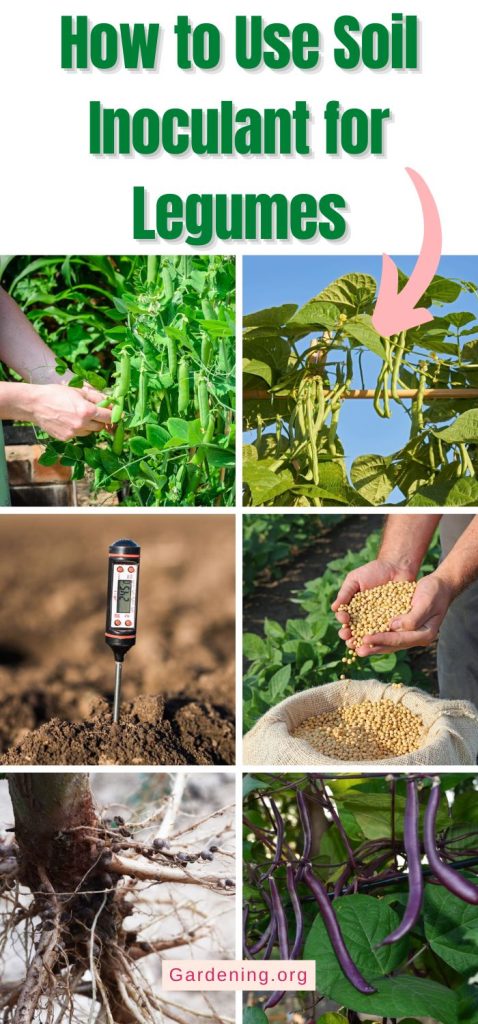
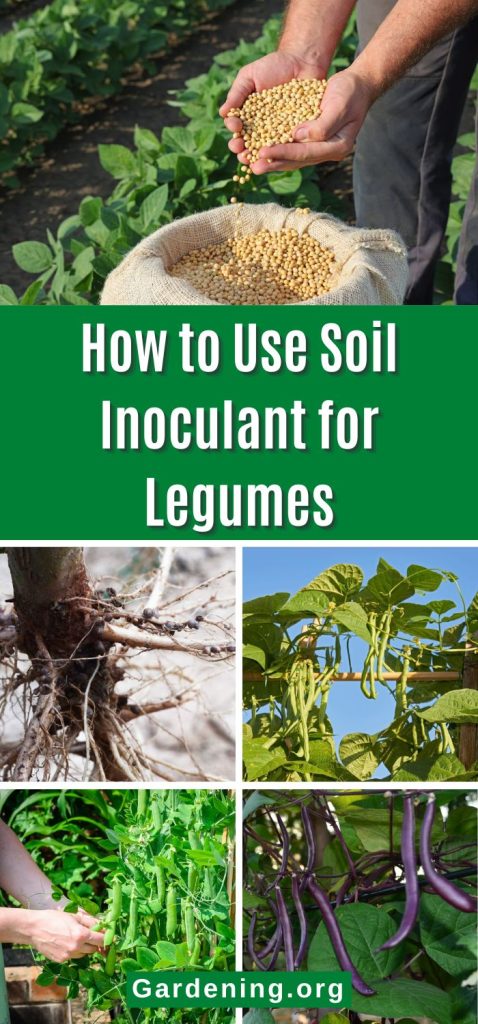
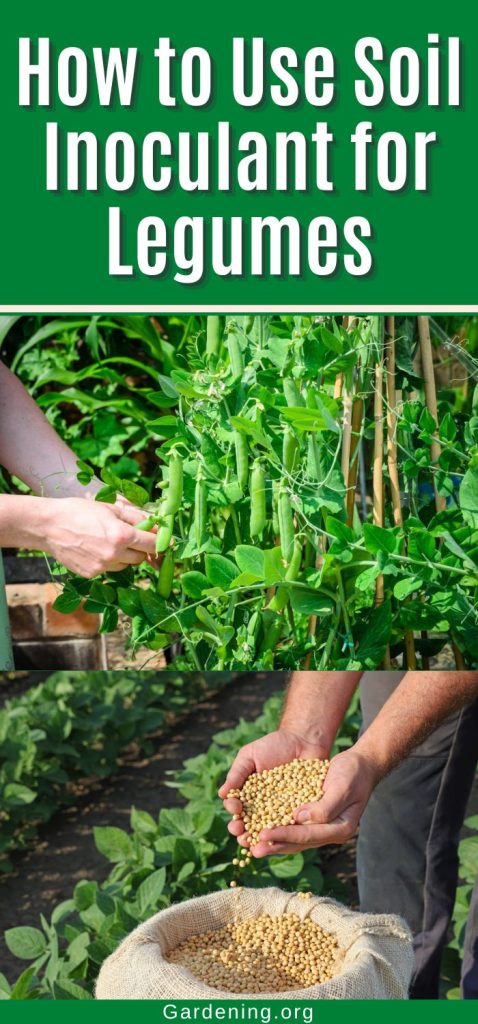

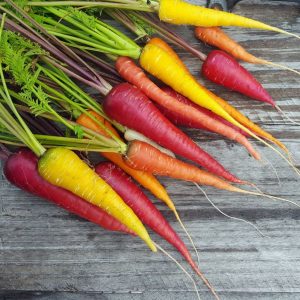
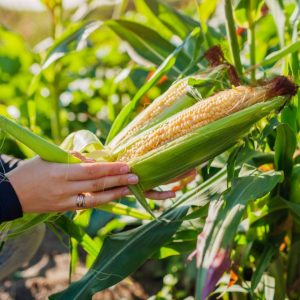
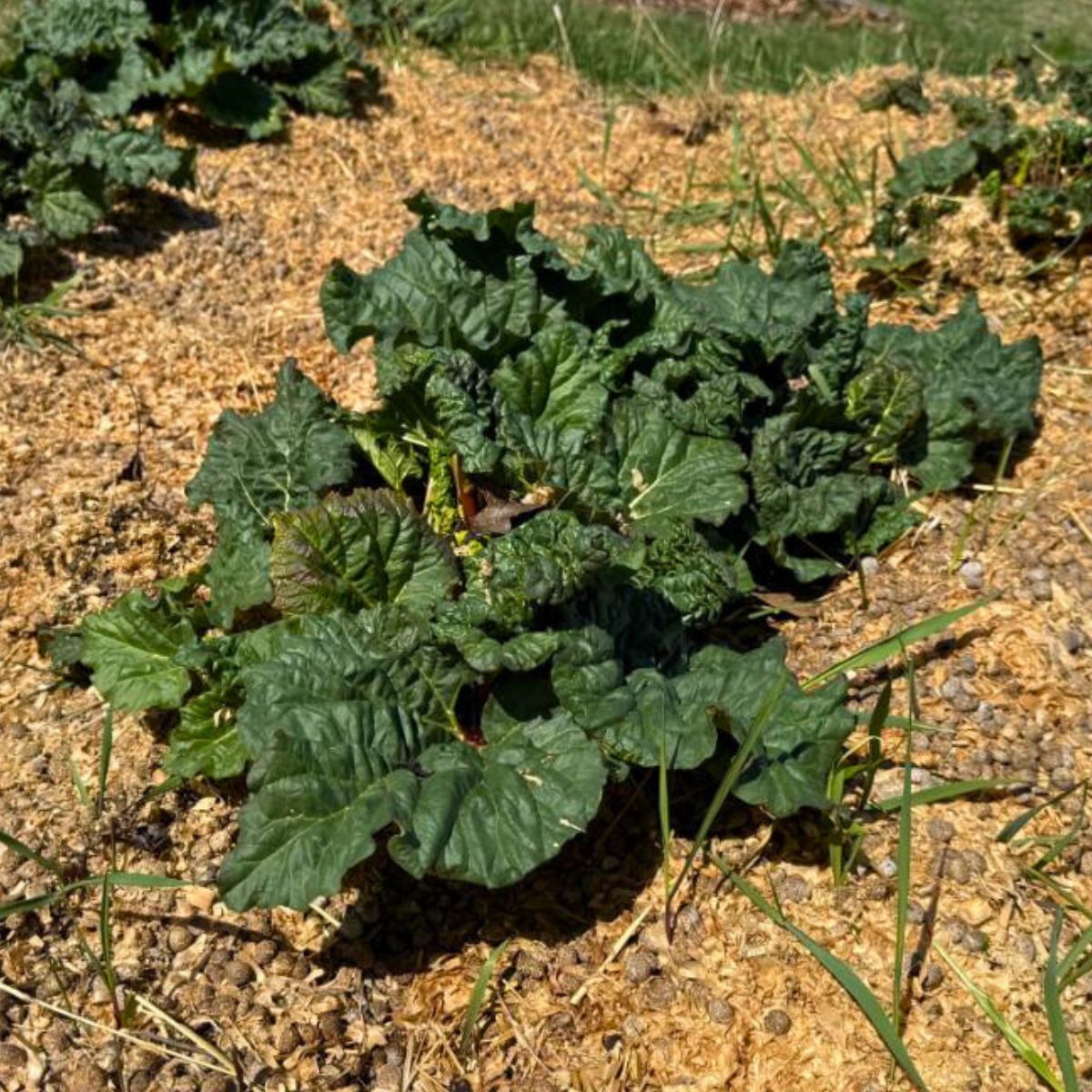
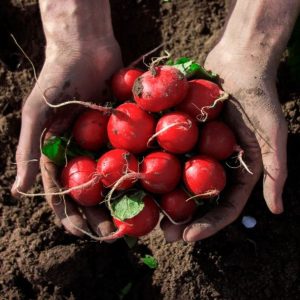
Leave a Reply